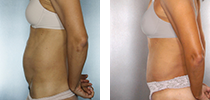As the 2016 presidential race rounds up its running candidates, the familiar face of Hillary Clinton is not only vying for the win, it’s also under the hot spotlight of public scrutiny. Hillary herself is tired of the attention placed on the details of her appearance, stating in an interview with CNN that, “If I want to wear my glasses, I’m wearing my glasses. If I want to wear my hair back I’m pulling my hair back. You know at some point it’s just not something that deserves a lot of time and attention.”
Although it comes as no real surprise that anyone with even a sliver of celebrity status should be exposed to the assessment of their looks by the media, the issue calls out the old, negative stigma behind plastic surgery and frankly confronts its legitimacy head-on.
To begin with, it’s unfortunate that this stigma also seems to be wrapped around a slew of double standards that annoyingly persist. In an article in The Atlantic, writer Michele Willens discusses the role of plastic surgery for women in the nation’s capital and in Hollywood—as well as the exhausted stigma behind it.
She admits to entertaining thoughts about Hillary Clinton’s looks and wishing “…she would get thee to a spa and move in for four months.” This begs the question, would so much opinion be focused on the alteration of a male opponent’s looks? Most probably not, but I digress.
Whether or not Clinton has had any work done—or whether she should in the future—is not the issue, nor should it be. With the number of cosmetic surgeries on the rise and more and more stars coming forth honestly about their past procedures and treatments, it would be nice if acceptance would reign and the stigma could just be buried in the sand already. Overly idealistic? Well, don’t give up just yet.
If there is any evidence of a fading negative stigma, it may very well be seen in the increasing number of procedures performed year after year. According to the American Society of Plastic Surgeons, 15.6 million cosmetic procedures were performed in the United States last year, with male patients making up 1.3 million of them.
Overall, the number has increased 3% from the year before. It is safe to say that not everyone is shouting it from the rooftop that they’ve had a little nip and tuck, and that, of course is their choice. However, it’s also safe to say that they didn’t let any fear of a lingering stigma stand between them and the goals they had for their appearances. And that indeed, can represent progress.
An article in the Journal of the American Society of Plastic Surgeons states that, “Rather than stigmatizing plastic surgery, media messages can foster acceptance and more realistic views about individuals who make this choice. If patients and the celebrities serving as culture’s tastemakers and role models are more confident and transparent about their decisions, we may experience a paradigm shift in the field.”
Well, whether the soiled blot on plastic surgery’s name is due to the media’s influence, or to society’s preconceived notions about what beauty should be, there does seem to be a ray of light in this process of revelation.
As Willen presented in her article, former First Lady Betty Ford openly discussed her facelift over 30 years ago stating, “I wanted a fresh new face to go with my beautiful new life.” And since her pioneering declaration, more famous figures have followed suit. Jane Seymour, Lisa Kudrow, and Jane Fonda are just a few who have been forthcoming about their procedures. In fact, Fonda was met with a burst of applause when she told Oprah that “good work” was behind her amazing looks in her mature age.
For sitcom star Patricia Heaton, the physical aftermath of multiple pregnancies was the reason behind her decision to go under the knife. She revealed to People magazine, “I had four C-sections and my stomach looked like the map of the world. My breasts were hanging down to here from breastfeeding those babies, and my nipples were like platters.
I wanted to fit into the gowns that I finally got to wear.” In the same article, Sharon Osbourne admitted that “I made fun of the ladies who were nipped, tucked and pulled. That is, until I joined the club.”
Could all of these more recent acknowledgements of plastic surgery be lifting the dark veil that once covered it? They certainly may be doing just that, or at least are a step in the right direction. For politicians, celebrities, and people of all walks of life, being open about having work done reduces the stigma that alterations to one’s image is something to hide or be ashamed of.
The reasons for plastic surgery are personal and unique in their nature, and many boil down to making changes that can affect how a person feels about themselves on the inside. In any case, America doesn’t need to approve of anyone’s decision in this matter. But the oh-so tiresome ‘have they or haven’t they’ debate will inevidently cease when the facts come to light.
So, back on to Hillary. Realistically, conquering the ageism and sexism issues of this world is not going to be done overnight. And even though the factor of media scrutiny typically comes with the prominent position territory, there’s hope that at some point it won’t overly involve a focus on possible plastic surgery procedures or on other aspects of appearance.
For Clinton, Obama, Trump, or any other person for that matter, the decision to undergo any cosmetic alteration is their right. It should be acceptable, and it should not the basis for judgment or demeaning analysis.
Ultimately, public openness and honesty seem to be one effective method of chiseling away at the stigma behind plastic surgery, allowing for a greater sense of freedom to make adjustments to your looks. If, at the end of the day, it makes you feel better about yourself—then why shouldn’t that be celebrated?




